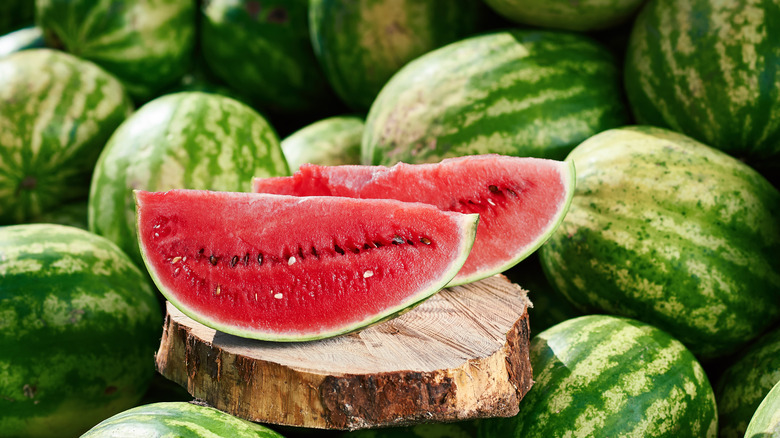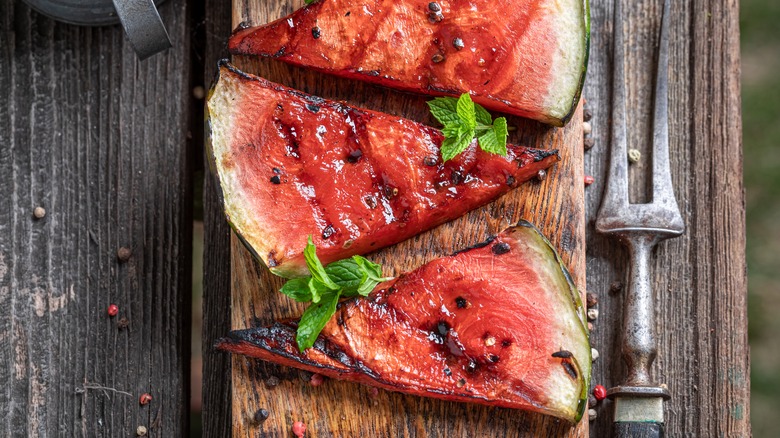How Michelin-Starred Chef Arnaud Bignon Elevates Watermelon
Watermelon is a classic summertime favorite. It's the time of year when monstrous slices of the red and green fruit become welcome guests at every poolside party, festival, picnic, and backyard barbecue. And for good reason, too. As people get more active in the summer, watermelon can keep you hydrated and help you recover from all of that extra outdoor exertion. According to Fruit Growers Supply, watermelon is also a summer crop, meaning that you're getting it at its sweetest time of year.
Chef Arnaud Bignon of Spondi has his own take on the summertime treat that helps elevate the classic sweetness of the fruit while adding some complexity to it as well. The two Michelin-starred chef's secret to adding more flavor to watermelon is to give it a quick sauté in a frying pan. The Staff Canteen shared his full methodology for creating superstar cubes of watermelon on their YouTube channel.
Grilling watermelon adds depth to the classic fruit
While watermelon is often paired up with grilled meats, it rarely shares any of the entrée's real estate over the charcoals. According to The Mediterranean Dish, grilling watermelon can give it a chewy texture and smoky flavor, and it also helps caramelize some of the sugars present in the fruit. Simply Side Dishes actually compares the flavor of grilled watermelon with a little bit of salt to that of squash. This makes sense because watermelons are actually more closely related to squash than to other melons (via Watermelon.org).
Chef Arnaud Bignon uses this unexpected flavor to add variety to a dish of Scottish lobster with a peanut butter satay sauce. He does this by cutting the watermelon into cubes and giving them a quick sauté in a lightly oiled pan. The cubes are rotated while they cook so that each side gets about 20 seconds to cook. This adds a slight coloration to the fruit and caramelizes some of the sugars. It's also important that the cubes are cooked lightly because they may easily fall apart without their rind (via The Mediterranean Dish).
Bignon then refrigerates them before adding them to a pool of lime juice and lightly zesting a lime over top (via The Staff Canteen). They then return to the refrigerator, where they are given time to soak up the flavors of the lime briefly before being served up alongside the lobster.

